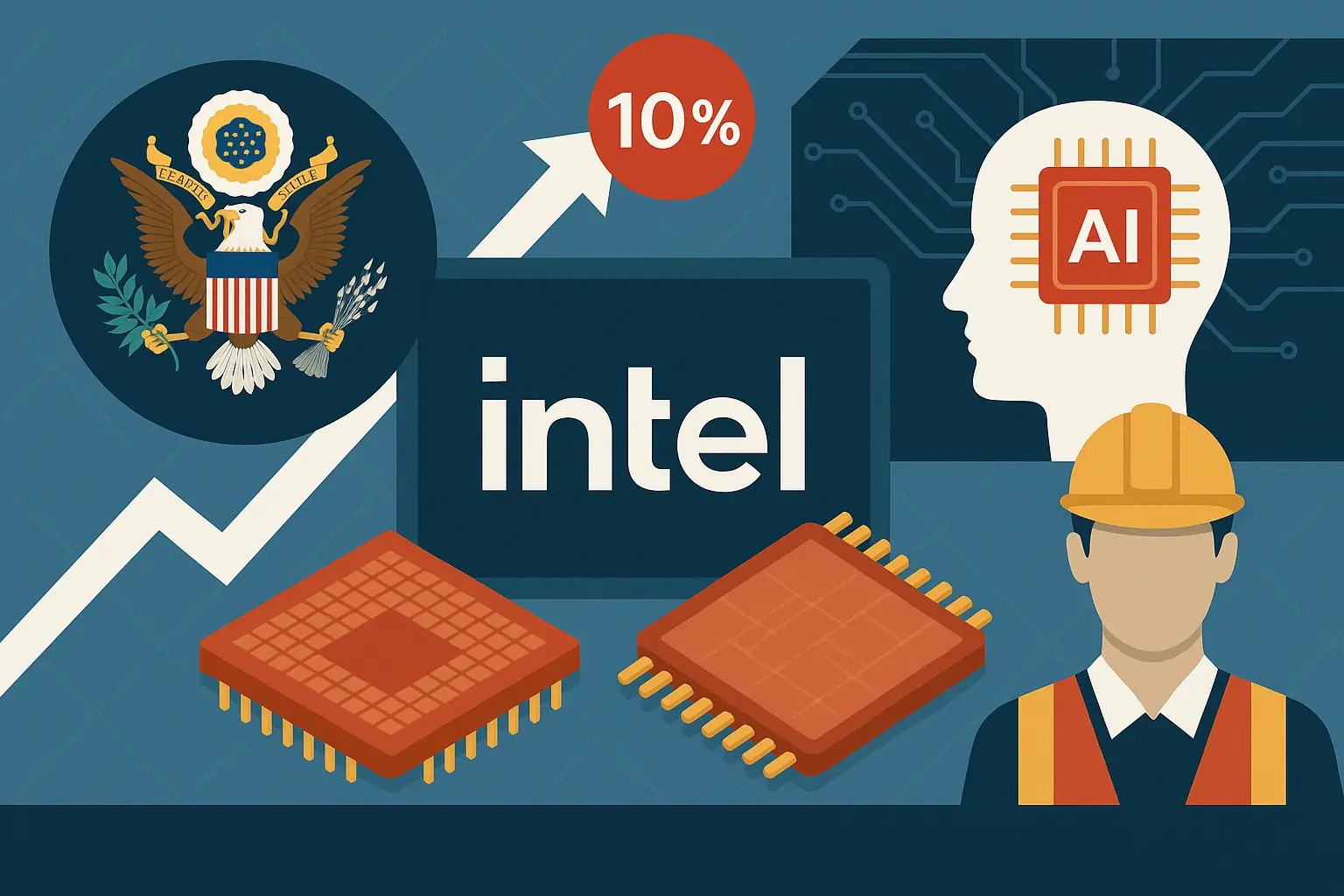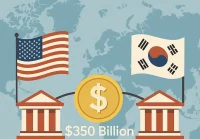Introduction
The US Government Intel stake marks one of the most significant interventions in America’s tech sector in decades. In August 2025, the Trump administration announced that the federal government would acquire a 10% equity stake in Intel, the only U.S. company capable of producing advanced semiconductors domestically.
The $8.9 billion deal, structured as a conversion of unpaid grants and secure chip program funds, gives Washington not only a foothold in the semiconductor industry but also a strategic lever in the race for global AI dominance. Supporters call it a bold bet on America’s tech future, while critics worry about government overreach into corporate America. Beyond the political drama, the move could reshape U.S. jobs, manufacturing, and technology leadership for years to come.
The Deal Breakdown
At the heart of the announcement is a $8.9 billion investment. The government bought 433.3 million Intel shares at $20.47 per share, a discount compared to the company’s trading price of nearly $25.
- Funding sources:
- $5.7 billion in unpaid CHIPS Act grants
- $3.2 billion from the Secure Enclave program
- Warrant clause: The government can purchase an additional 5% stake if Intel loses majority control of its foundry business.
- No governance rights: Washington will be a passive investor without a board seat, though it must generally vote in alignment with Intel’s board.
President Trump framed the deal as a win-win: “We paid nothing for these shares, and they’re already worth $11 billion. A great deal for America, and a great deal for Intel.”
Intel stock reflected investor optimism, closing up 5.5% on the day of the announcement and adding another 1% in after-hours trading.
Why Intel? The Bigger Context
The US Government Intel stake didn’t appear out of thin air—it stems from years of struggle inside the company and mounting geopolitical concerns.
- In 2021, Intel launched its foundry division with a $20 billion commitment to build two factories in Arizona.
- By 2023, its attempted $5.4B acquisition of Tower Semiconductor collapsed due to regulatory roadblocks.
- Intel’s foundry business failed to attract large-scale customers, raising doubts about its future.
- In 2024, then-CEO Pat Gelsinger spun the foundry into a subsidiary, secured $7.86B in Chips Act grants, and later resigned amid mounting losses.
The company posted an $18.8 billion loss in 2024—its worst since 1986—and has steadily lost ground to AMD in CPUs and Nvidia in AI chips. For Washington, however, Intel remains too important to fail: it is the only American player capable of producing leading-edge chips on U.S. soil, critical for both AI progress and national security.
Trump Administration’s Strategy
The Intel deal fits into President Trump’s broader strategy of reshoring manufacturing and cementing U.S. leadership in artificial intelligence.
- Policy tools: tariffs on foreign chips, subsidies for domestic fabs, and now direct equity stakes.
- Pattern of intervention: Recent deals include a revenue-sharing arrangement with Nvidia, a Pentagon-backed investment in MP Materials (rare earth mining), and a “golden share” arrangement in U.S. Steel during its Nippon Steel acquisition.
- Political angle: Trump initially clashed with Intel CEO Lip-Bu Tan over his ties to China but later struck a deal following direct meetings in Washington.
Commerce Secretary Howard Lutnick described the deal as “fair to Intel and fair to the American people,” underscoring the administration’s willingness to act aggressively in reshaping U.S. corporate priorities.
What This Means for Jobs and Manufacturing
This is where the WhatJobs perspective comes in: the US Government Intel stake isn’t just about technology—it’s about employment and economic opportunity.
- Factory expansion: The $10 billion in secured funding ensures progress on Intel’s U.S. fabrication plants, including major projects in Arizona and Ohio.
- Job creation: These fabs could generate thousands of high-skilled jobs for engineers, technicians, and researchers, alongside construction and supply chain roles.
- Workforce transformation: The focus on advanced chip production may accelerate demand for workers with AI, robotics, and semiconductor manufacturing skills.
- Risks: Intel is still undergoing restructuring, which has already led to layoffs. If the turnaround falters, job creation could be slower than projected.
For job seekers, this is a clear signal: semiconductor manufacturing, chip design, and AI-related roles will be among the most in-demand careers in the coming years.
Market & Industry Reactions
The Intel deal has sparked both optimism and skepticism across Wall Street and Silicon Valley.
- SoftBank invested $2 billion in Intel just days before the U.S. government stake was announced.
- Analysts warn Intel’s technological lag behind TSMC and Nvidia is its biggest hurdle—not just capital.
- Some industry experts argue Intel’s foundry may need another strong partner to scale effectively.
- Intel stock rallied on the announcement, but broader markets showed caution, with the Dow and S&P 500 slipping slightly.
Looking to Hire Top Talent?
Post your job on WhatJobs and reach thousands of active candidates today.
Post a Job Now →The Road Ahead: Risks & Opportunities
The US Government Intel stake creates opportunities—but also risks.
Opportunities:
- Reshoring semiconductor production, reducing reliance on Taiwan.
- Boosting America’s AI competitiveness.
- Creating thousands of jobs in advanced manufacturing and research.
Risks:
- Government intervention could create new political risk categories for corporations.
- Intel’s turnaround depends not just on cash but on closing the tech gap with global leaders.
- CEO Lip-Bu Tan still faces scrutiny over past ties to China, which could reignite controversy.
Ultimately, this move gives Intel breathing room but doesn’t guarantee success.
Conclusion
The US Government Intel stake is a watershed moment in the intersection of politics, technology, and employment. By converting grants into equity, Washington has secured a major role in America’s most strategic tech company while betting on Intel to lead the next era of chipmaking and AI innovation.
For U.S. workers, the stakes are just as high: the future of semiconductor manufacturing could define not only America’s technological leadership but also the creation of tens of thousands of new, high-value jobs.
What remains uncertain is whether Intel can truly capitalize on this lifeline—or whether it will remain stuck in the shadows of Nvidia and TSMC. Either way, the world is now watching as Intel becomes the frontline of America’s AI and jobs strategy.




